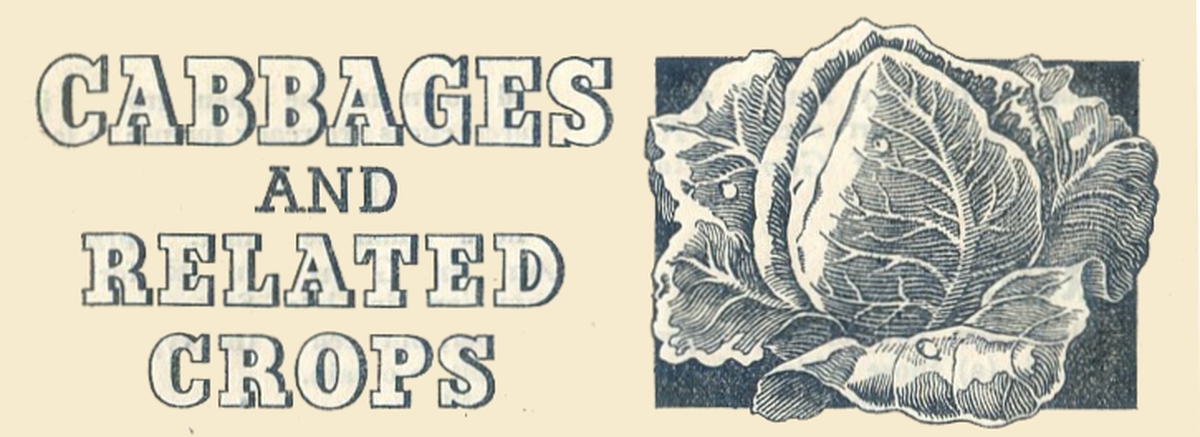PLANTING
All the crops except Brussels sprouts may go on ground cleared of early potatoes, or early varieties of peas. The Brussels sprouts require a longer season of growth and succeed best when planted in May on their own piece of ground.
The soil which was dug and manured for the early potatoes will require no further applications of organic matter, but if poor and needing assistance, the use of a complete fertilizer such as the ” National Growmore Fertilizer ” will assist growth. This fertilizer is of special value to those crops which have to stand the winter. Use at the rate of 2 oz. per sq. yd. before planting and fork it well into the surface soil.
Cabbage for spring cutting often occupies the site where onions have been grown and removed. These are planted in late September and October, and this is also a good time to plant red cabbage.
Brussels sprouts should be the first of these crops to be planted in the year. Summer cauliflowers are planted in May, together with summer and autumn cabbage, followed by the sprouting and ” curd “-forming broccoli, the autumn cauliflowers, and lastly the winter cabbage, savoys and kales. The object should be to get these crops planted before the third week in July, for if planted after this time they are only partially developed before the cold weather sets in and active growth ceases.
The soil need not be dug over again after the early crops of potatoes and peas have been cleared, but it should be lightly forked over, levelled and made firm.
A suitable planting distance for the cauliflowers, broccoli and kales is 24 in. square.
Brussels sprouts should be spaced 30 in. square. Spring cabbages are planted at a distance of 18 in. from plant to plant and from row to row, but winter cabbage and savoys need 24 in. spacing between the rows. A garden line is the best means of keeping the plants in straight rows.
Hoe Frequently
Plant with a dibber, deep enough to bury the roots and stem up to the first leaves. Press the soil firmly round the plant with the dibber or by the use of the heel. The plants are often put out in dry weather and then need watering. Sometimes puddling is practised by placing soil and water in a bucket in which the plants’ roots are plunged before planting.
If dry weather continues, the plants are watered each day until established and showing signs of making new leaves. If any plants die through bad planting or slug attack the gaps are filled with further plants from the seedbed.
Practise frequent hoeing of the soil between the rows. This not only prevents the growth of weeds but aerates the soil, thus encouraging continuous growth.
When active growth commences in spring, cabbage crops are occasionally given a dressing of a nitrogenous fertilizer, such as sulphate of ammonia, a small quantity being sprinkled around the roots without letting any particles fall on the leaves. After applying the fertilizer, it should be worked into the soil with a hoe.
From June to October the caterpillars of the Cabbage White Butterflies may be found feeding on the leaves. These should be picked off by hand and destroyed.
Issued by the Ministry of Agriculture and Fisheries) Hotel Lindum—St. Annes – on – Sea—Lancashire
February 1943



